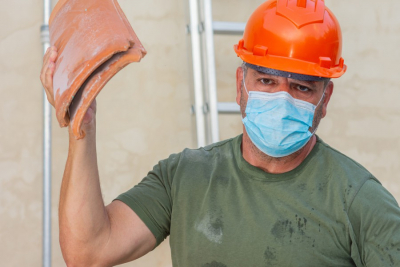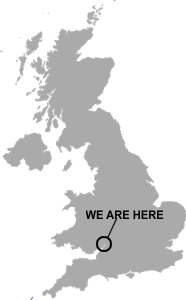With the sweltering temperatures making life pretty uncomfortable at times for many of us this week, we would usually expect to see some articles and blogs, including from us, about maximum workplace temperatures. Things are a little different this year and with the new rules and guidelines that Covid-19 has brought to bear, there will be new challenges to add to those we normally have to deal with during any heatwaves.
Some reports have suggested that we should see a reduction of cases of Covid-19 in the warmer weather. However these reports tend to be based on the fact that the transmission rates of most coronaviruses, including the common cold for example, tend to reduce in the summer months. We must wait for statistics for Covid-19, which will be skewed and influenced by the extent to which individuals maintain the measures that have been implemented to restrict its spread.
Of course a large proportion of the workforce in the UK remain on furlough, but as we implement the precautions in the workplace to enable workers to return and remain safe from Covid, we still need to consider their more general wellbeing and physical health; including the implications of hot weather.
As we’ve reported in the past, the Health & Safety Executive does not prescribe a maximum workplace temperature per se, but instead refers to “Thermal Comfort” when discussing employers’ legal responsibilities. In assessing the thermal environment of a place of work, we should consider more than air temperature alone. Air flow and humidity are among other factors to consider, as is the employees’ own clothing, which now might include PPE.
New Health and Safety constraints that require more employees in a much wider range of industries to wear PPE is very likely to have a significant impact on thermal comfort and therefore employee health generally. By their very nature to be a barrier against infection, PPE items such as rubber/plastic gloves, plastic aprons and facemasks will likely become uncomfortable more quickly and require changing on a more regular basis in the warmer weather.
As a solution you might consider rotating jobs amongst staff between those that do and do not require the wearing of PPE where appropriate. Other simple steps we might expect employers to take and which may already be implemented to reduce the spread of Covid-19 include:
- Ensuring airflow through the building is sufficient
- Where possible, open windows and doors or provide fans
- Make drinks readily available and encourage employees to take an extra break
- Consider alternative shift patterns or working hours ie. earlier start and finish times
- Introduce a comfort zone where the temperature can be controlled and allow managed access to it
- Relax the dress code, within reason
- Pay special attention to those at higher risk ie. pregnant or older employees
- Investigate the possibility of alternative working environments. eg. Another office, home, outside
The guidelines to work from home wherever possible will no doubt help, but in addition to ensuring that homeworkers have an appropriate environment to work in, we should also ensure that they feel empowered to take adequate breaks and take steps to remain cool and hydrated.
Let’s not also be side-tracked to ignore that fact that pleasant weather also brings about a rise in sporadic absences that might be viewed with a degree of scepticism. Now more than ever business require their staff to pull their weight and contribute to the best of their ability when there is work to be done. So, if you haven’t already done so, revise your attendance policy to include home working and attendance measures. Be clear, that people are either “at work or not” and whilst working from home there should be clear communication around fitness for work and notification processes.
If you need specific support about any HR and Employment Law Related issues during the Covid crisis, please call us on 01452 331331 or e-mail This email address is being protected from spambots. You need JavaScript enabled to view it.



